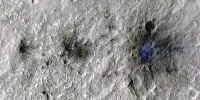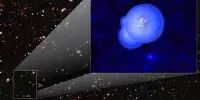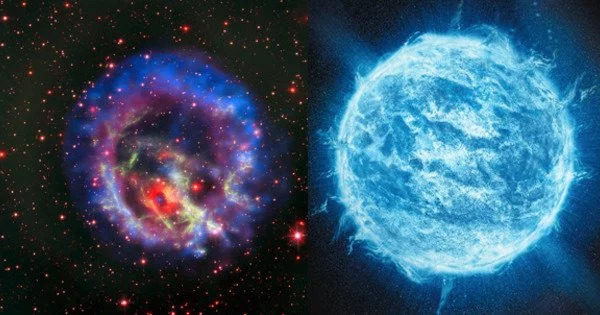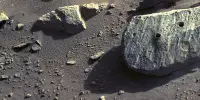On the evening of Friday, November 18, a cosmic drama took place above southern Ontario, sparking an international partnership and a meteorite hunt. The Catalina Sky Survey in Arizona discovered a tiny object traveling toward Earth just before midnight Eastern time.
Numerous observatories worldwide monitored this tiny asteroid, now known as 2022 WJ1, for the following three hours before it collided with Earth over southern Ontario at 3:26 a.m. EST on November 19.
Several members of the Western Meteor Physics Group and the Institute for Earth and Space Exploration (Western Space) were able to relocate outside and find clear weather to monitor the impending object thanks to the little notice of the asteroid impact.
An early-morning drive-by geophysics student David Clark to the projected fall location allowed him to observe the fireball firsthand. He parked close to Niagara-on-the-Lake at the crossroads of Highway 403 and Niagara Regional Road 55. (formerly Highway 55).
“It passed right overhead at the predicted time and was distinctly green in color,” said Clark. “Several minutes later a noticeable sonic boom could be heard.”
Paul Wiegert, a professor of physics and astronomy, was also informed in time to observe the fireball.
“I watched from Brescia Hill on the Western campus. Though cold and windy, the hill had a clear view to the east, where I expected to see only a distant flash. Then the fireball suddenly appeared, passing almost overhead. Wow! It was easily visible between broken clouds and noticeably orange-red,” said Wiegert.
As expected, the bright fireball created by 2022 WJ1’s final fall was also captured by Western’s All-Sky Camera Network over southern Ontario at 3:26 a.m. on Nov. 19. The meteoroid entered the atmosphere of the planet just south of Woodstock, and it continued eastward as a brilliant fireball until it ended about 20 kilometers (11 miles) north of the town of Vineland.
Analysis of the video data, which was also recorded by cameras donated by Curtin University (Australia) inside the Western network, indicates that it’s possible that some meteorite bits ended up on the ground close to the southern shore of Lake Ontario, primarily to the north of St. Catharines.
“This fireball is especially noteworthy because the parent meteoroid was seen up close before it entered the atmosphere. This is a unique chance to correlate an asteroid’s telescopic data with its atmospheric breakup behavior to learn more about its interior structure “Peter Brown, the Western University’s Canada Research Chair in Planetary Small Bodies, said.
Only six other asteroid impacts have ever been forewarned of in history, and they were all discovered just hours before they entered the atmosphere in every single case. This is the first anticipated event to take place over a densely populated area and within the detection range of fireball measurement equipment.
Six cameras in the All-Sky Camera Network and Western’s Canadian Meteor Orbit Radar were able to detect the fireball despite the fact that there was heavy cloud cover in southern Ontario at the time, providing an unprecedented record of the small asteroid’s atmospheric fusion.
When combined with telescopic data, “this spectacular event will reveal hints about the makeup and strength,” said Brown, “which will enrich our understanding of how small asteroids break up in the atmosphere, crucial knowledge for planetary defense.”
The recovery of meteorites connected to the 2022 WJ1 fireball is the final piece of this cosmic jigsaw, and experts are asking for the public’s help. In particular, anybody living between Port Weller and Virgil should be alert.
“We know that meteorites almost probably made it to the ground around or to the east of Grimsby because of camera footage and weather radar that monitored falling debris from the fireball. Now that we have recovered some of these pebbles, we need to determine what kind of material made up asteroid 2022 WJ1 in order to conclude this tale “Brown added. “This is quite similar to a sample return mission in space, except that the sample fell on us.”
Meteorites can be identified by their black, frequently scalloped appearance and their thin, millimeter-thick fusion crust that covers their gray, rocky inner. They typically have a higher density than “regular” rocks and are frequently drawn to magnets because of the metal they contain. Although meteorites are not harmful, it is advisable to store them in a clean plastic bag or wrap them in aluminum foil if they are found. Additionally, they ought to be handled as little as possible to maintain their scientific significance. In Canada, meteorites are the property of whoever owns the land where they were discovered. Before entering private property to conduct a search, people should always ask the landowner for permission.
















